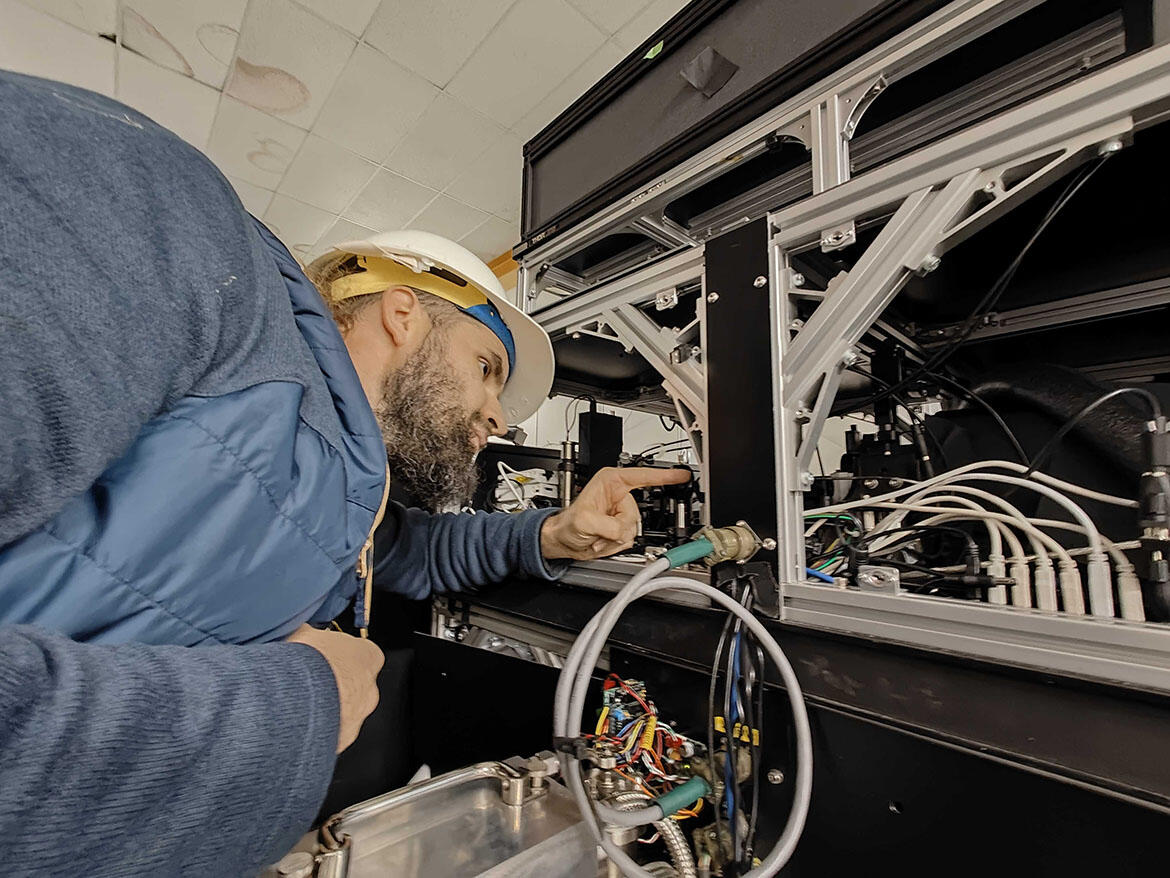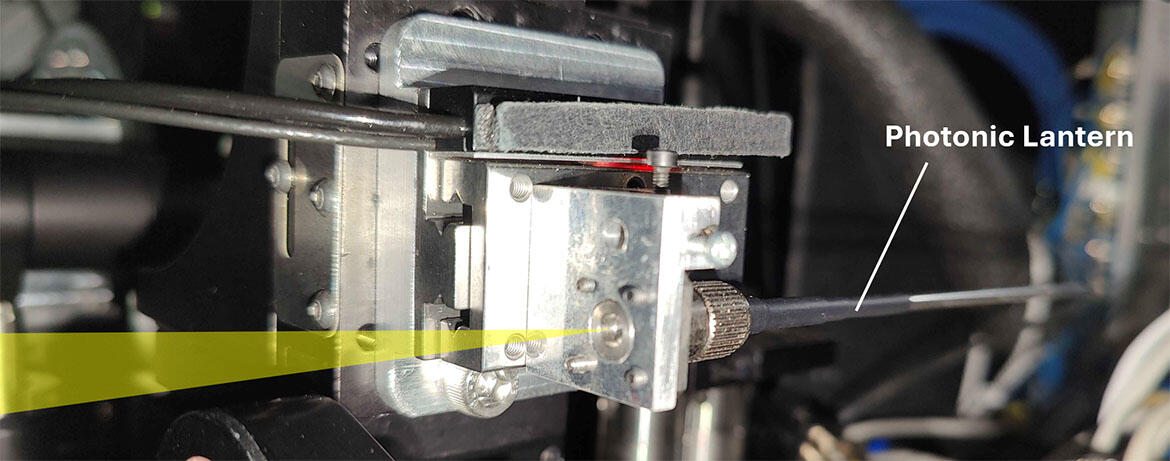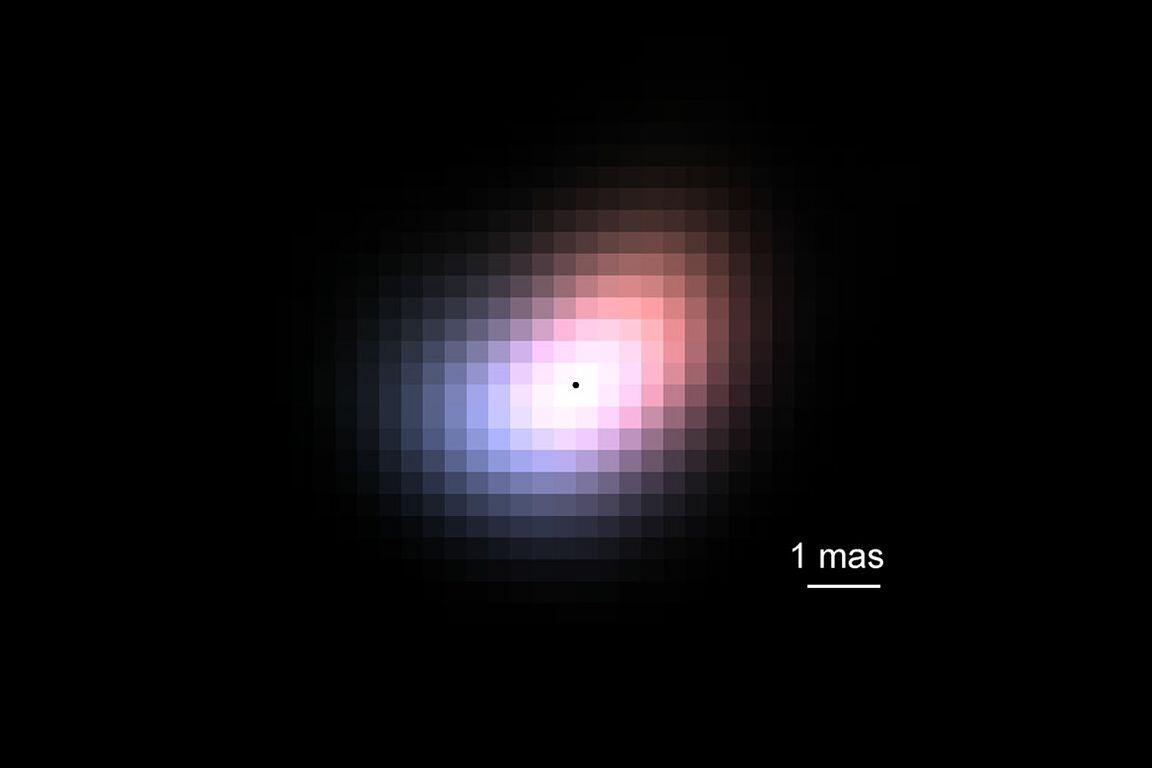Equipped with a groundbreaking new instrument, the Subaru Telescope is opening a new window into the Universe, allowing astronomers to see deeper into space than ever before using a single telescope. The first-of-its-kind device, called a photonic lantern, has set a new benchmark for how scientists observe distant stars and planets.

Figure 1: Sébastien Vievard climbing on the SCExAO instrument, in which the photonic lantern is installed, to check the point where light enters the device. (Credit: Sébastien Vievard/University of Hawai`i at Manoa)
The photonic lantern separates starlight into multiple channels, like breaking a musical chord into individual notes, allowing computers to rebuild an ultra-clear image. It's part of a new instrument called FIRST-PL, developed and led by the University of Hawai`i (UH) and the Paris Observatory, and installed on the advanced optics platform SCExAO (Subaru Coronagraphic Extreme Adaptive Optics) at the Subaru Telescope.

Figure 2: Photonic lantern, a specially designed optical fiber, mounted on the FIRST-PL instrument at the Subaru Telescope. The yellow triangle indicates the path of the light entering the lantern. (Credit: Sébastien Vievard/University of Hawai`i at Manoa)
"What excites me most is that this instrument blends cutting-edge photonics with the precision engineering done here in Hawai`i," says Sébastien Vievard (UH/Subaru Telescope). "It shows how collaboration across the world, and across disciplines, can literally change the way we see the cosmos."
Sharper Cosmic Views
The breakthrough observations used the new setup to study beta Canis Minoris (β CMi), a nearby star located about 60 light-years away in the direction of the constellation Canis Minor.
The observations revealed that its fast-spinning gas disk is unexpectedly lopsided, a detail never seen until now.
"This device splits the starlight according to its patterns of fluctuation, keeping subtle details that are otherwise lost. By reassembling the measurements of the outputs, we could reconstruct a very high-resolution image of a disk around a nearby star," says Yoo Jung Kim, a graduate student at UCLA, and lead author of the study.

Figure 3: Reconstructed image of the compact, fast-rotating asymmetric disc around β CMi. The white scale bar on the lower right marks 1 milliarcsecond — equivalent to a 6 foot scale at the distance of the Moon. (Credit: Yoo Jung Kim/UCLA)
The international team included researchers from UH, UCLA, the Paris Observatory, the University of Sydney, and Subaru Telescope.
Toward Full Operation
Researchers are currently in the commissioning phase, with the goal of making FIRST-PL available to the broader scientific community within the next year. Once complete, it will become the first-ever commissioned photonic lantern–based instrument on any telescope—a milestone for both the Subaru Telescope and the wider astronomical community.
These results appeared as Kim et al. "On-sky Demonstration of Subdiffraction-limited Astronomical Measurement Using a Photonic Lantern" in The Astrophysical Journal Letters on October 22, 2025.


